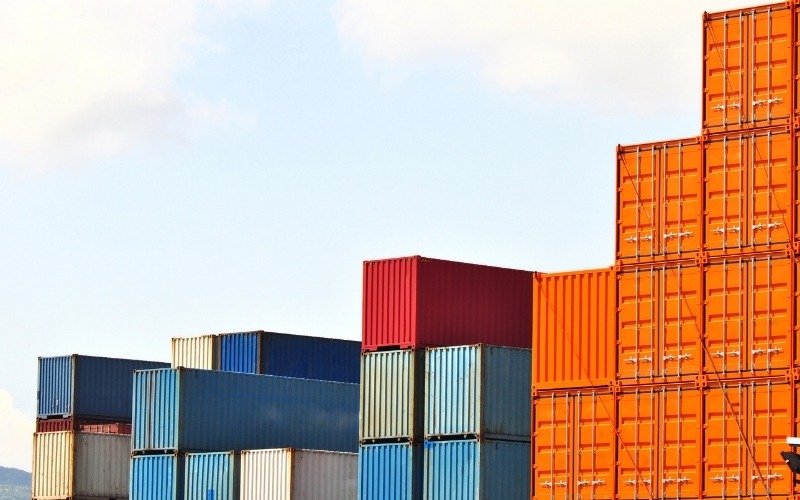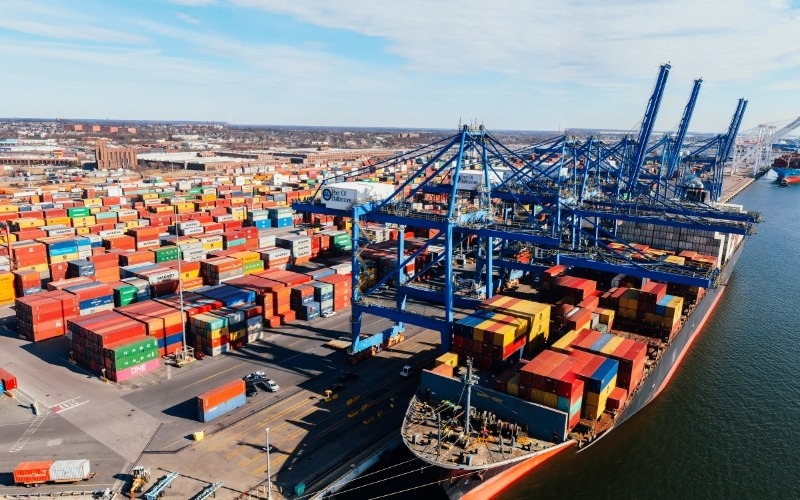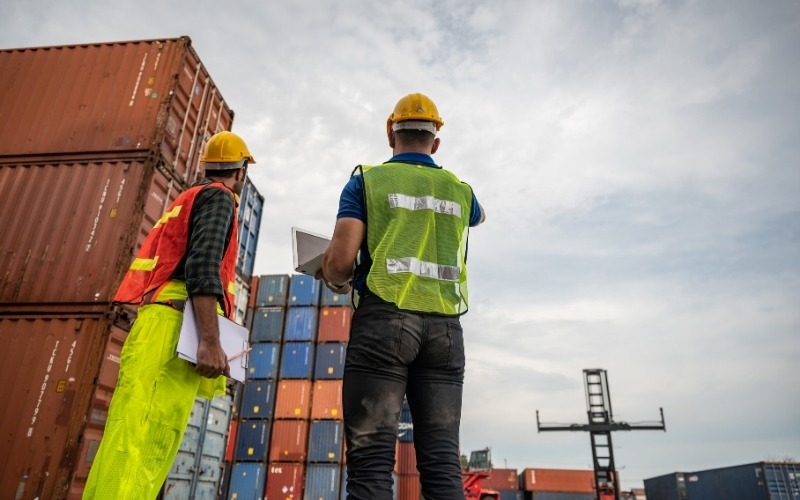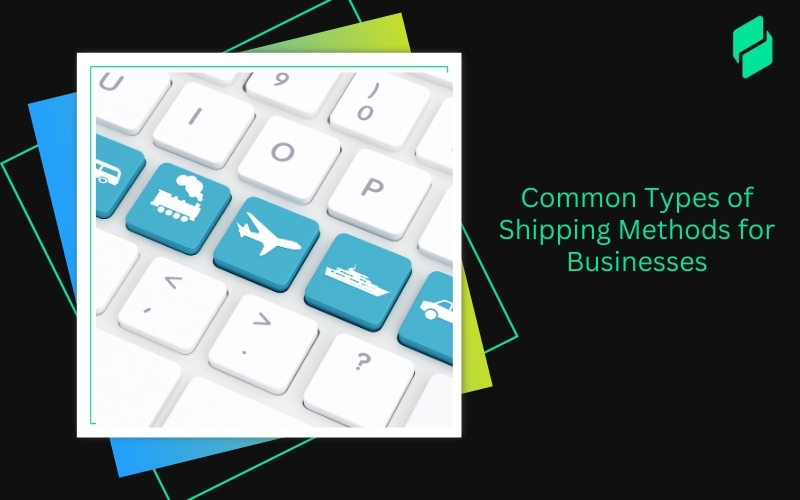Optimize your business: use unlimited savings with Pazago fulfilled now!
Get Started ->Exporting from India can feel confusing when you’re deciding between LCL (Less-than-Container Load) and FCL (Full-Container Load). You might worry about costs, delays, or damaged goods, and those concerns are very real for SMEs sending smaller shipments abroad.
More than 329 million deadweight tons of cargo were transported through container ships last year. This shows just how much global trade depends on making the right shipping choices. For smaller exporters, choosing wisely can make the difference between profit and loss.
In this blog, we’ll explore what LCL in shipping means, how it compares to FCL, the key differences between the two, and when each makes sense for Indian SMEs. We’ll also look at hidden costs, practical tips, and signs that tell you when it’s time to switch from LCL to FCL.
Key Takeaways:
- LCL is best for smaller shipments that don’t fill an entire container, allowing you to share space with others.
- FCL offers more control and faster transit times, ideal for larger shipments or high-value goods.
- Hidden costs like consolidation fees, handling, and delays can add up with LCL.
- As order volume increases, FCL often becomes more cost-effective and reliable.
- Tools like Pazago help exporters track shipments and manage paperwork, improving overall logistics.
What is LCL (Less-than-Container Load) in Shipping?

LCL is when multiple exporters share space in a container, and you only pay for the space your goods occupy. This method is cost-effective for small shipments, especially when testing new markets. LCL charges are typically based on either cubic meters (CBM) or weight, whichever is higher.
For example, shipping 5 CBM of goods to Dubai in a full 20-foot container would be inefficient. With LCL, your goods are consolidated with others at a Container Freight Station (CFS), reducing costs while still enabling international delivery.
While LCL offers flexibility for smaller shipments, another option that may be better suited for larger consignments is FCL.
Also Read: Common Types of Containers for Shipping
What is FCL (Full-Container Load) in Shipping?
FCL involves reserving an entire container for your goods, regardless of whether it’s fully packed. This method is ideal for large shipments, regular exports, or sensitive/high-value goods that require fewer touchpoints during transit.
For example, shipping 20 CBM of goods to Europe may be more economical with FCL than LCL, as you gain better control over the shipment and reduce risks associated with shared containers.
Now that you have a basic understanding of both LCL and FCL, it’s time to compare them side by side. While both methods serve different purposes, the right choice depends on several factors, from cost to handling preferences.
Also Read: What Is FCL Shipping? Definition, Container, Prices
LCL vs FCL: Key Differences at a Glance
Both LCL and FCL serve exporters in different ways, and the choice usually depends on shipment size, urgency, and cost considerations. While LCL offers flexibility for smaller consignments, FCL provides greater control when volumes increase.
To make the comparison clearer, here’s a table that outlines the main differences between the two methods:
After reviewing the differences, you may still be wondering: which one is right for my shipment? The decision often depends on factors like shipment volume, urgency, and risk.
Also Read: Understanding CBM: Its Full Form and Calculation Method
Choosing Between FCL and LCL

Deciding whether to ship through LCL or FCL often comes down to a mix of cost, shipment size, urgency, and the type of goods being exported. For SMEs, these choices directly affect cash flow, delivery timelines, and customer satisfaction.
Here are the main factors to consider before making your decision:
- Shipment Size and Volume: Smaller consignments are usually better suited for LCL, while larger loads often become cost-effective under FCL. A standard benchmark is when your goods occupy more than half of a 20-foot container.
- Urgency of Delivery: LCL shipments may experience delays due to consolidation and deconsolidation, whereas FCL shipments typically move faster with fewer stops.
- Fragility and Value of Cargo: Goods that are sensitive or high in value often fare better under FCL since they face less handling and fewer risks from shared space.
- Cash Flow Considerations: LCL allows exporters to avoid paying for unused container space, which can be helpful when working with smaller budgets.
- Frequency of Shipments: Businesses with regular orders might find FCL more practical over time, while those exporting irregularly may prefer the flexibility of LCL.
- Port and Customs Conditions in India: Congestion at particular ports or Container Freight Stations can increase delays in LCL, while FCL offers more direct clearance in many cases.
While making the choice between LCL and FCL is important, it’s equally essential to understand the hidden costs that can influence your final decision.
Also Read: Differences and Uses of Various Shipping Container Sizes and Types
Hidden Costs and Practical Tips for SMEs
Many exporters focus only on freight rates when comparing LCL and FCL, but there are additional costs that can influence the final decision. Understanding these charges helps avoid surprises and gives you a clearer picture of total shipping expenses.
Common Hidden Costs in LCL
Before choosing LCL, exporters should be aware of several charges that are often overlooked:
- Consolidation and Deconsolidation Fees: Since your goods share a container, they need to be grouped at the origin and separated at the destination, which adds handling charges.
- Terminal Handling Charges (THC): At Indian ports and Container Freight Stations (CFS), fees are applied for moving goods in and out of terminals. These can add up quickly for LCL shipments.
- Customs Delays: If another shipper in your shared container faces clearance issues, your cargo may also get delayed.
- Risk of Damage: Higher handling means greater chances of scratches, dents, or exposure to other exporters’ goods that may not be packaged securely.
Cost Factors in FCL
While FCL avoids some of the risks of LCL, it comes with its own set of cost considerations:
- Paying for Empty Space: If your cargo does not fill the container, you will still be charged the full cost.
- Inland Transport: Moving a full container by truck or rail in India can be more expensive than transporting smaller consignments.
- Container Detention and Demurrage: If containers are not returned on time, penalties apply, which can affect your shipping budget.
Practical Tips for SMEs
To keep shipping affordable and avoid unnecessary problems, SMEs can follow a few proven practices:
- Plan Shipments Early: Early booking often secures better freight rates and reduces the risk of unexpected surcharges.
- Pack Goods Carefully: Well-organized packing reduces wasted space in LCL and protects cargo from damage.
- Choose Trusted Forwarders: Experienced forwarders can guide you on whether LCL or FCL makes better sense for your specific load and route.
- Consolidate Orders Where Possible: If you can coordinate with buyers to combine shipments, you may reach a point where FCL becomes more cost-effective.
- Track Additional Charges: Always ask for a breakdown of fees beyond the base freight to compare options fairly.
As your business grows, your shipping needs may change. What starts as an LCL shipment may no longer be the best choice as your volumes increase. So, when is it time to switch to FCL?
Also Read: Guide To Understanding Common Port Charges And Dues
When to Switch from LCL to FCL?

Many exporters begin with LCL because it reduces upfront expenses when shipment volumes are small. Over time, as orders increase, FCL often becomes the more cost-effective option, both financially and operationally. Knowing the right moment to switch helps avoid unnecessary costs and delays.
Here are the key signs that indicate it may be time to move from LCL to FCL:
- Growing Shipment Volumes: If your consignments consistently reach around half or more of a 20-foot container (roughly 15–17 CBM), FCL often becomes more cost-effective.
- Regular Orders: When you start receiving steady purchase orders from the same buyer or region, FCL reduces delays caused by frequent consolidation.
- High-Value or Fragile Goods: Products that are sensitive, perishable, or expensive benefit from the reduced handling that comes with FCL.
- Customer Deadlines: If buyers expect strict timelines, FCL offers more reliable scheduling compared to shared shipments.
- Rising Handling Costs in LCL: If you notice consolidation, deconsolidation, and CFS charges adding up, the total cost may justify moving to FCL.
- Better Cash Flow Availability: Once your business can handle the upfront expense of a full container, it may provide better long-term returns.
Making the right decision between LCL and FCL is just the beginning. To manage both types of shipments effectively, you need reliable tools that offer transparency and ease of communication.
Also Read: Standard Shipping vs Express Shipping: A Simple Guide
How Pazago Helps Indian Exporters Simplify Shipping?

Managing exports through LCL or FCL can involve multiple challenges, from tracking cargo to coordinating with freight partners. A digital platform like Pazago makes the process easier by giving exporters greater visibility and control over their shipments.
Here are some of the ways Pazago supports SMEs in managing international trade more confidently:
- Real-Time Shipment Tracking: Get live updates on the location and conditions of your cargo, including alerts for temperature-sensitive goods, ensuring the safe and timely arrival of shipments.
- Efficient Communication with Stakeholders: Pazago connects you directly with freight forwarders, customs agents, and buyers, reducing delays and miscommunication.
- Centralized Document Management: Store and access all necessary documents, including invoices, customs forms, and certificates, to ensure smooth and efficient clearance at customs.
- Optimized Shipping Routes: Pazago plans and selects the best shipping routes, helping avoid delays caused by congestion or route inefficiencies.
- Simplified Financial Management: The platform supports managing payments, currency conversion, and financing, making it easier to handle large or frequent shipments.
- Scheduled Quality Inspections: Pazago allows you to arrange and manage quality checks before goods are dispatched, ensuring compliance with international standards.
By combining these features, Pazago helps exporters reduce confusion, cut delays, and build trust with overseas buyers.
Conclusion
Choosing between LCL and FCL depends on your shipment size, urgency, type of goods, and long-term business goals. LCL can support smaller, irregular consignments, while FCL often makes sense once your orders grow in volume or value. For Indian SMEs, weighing costs against risks is crucial in making informed shipping decisions.
The good news is that exporters today have access to digital tools that simplify international trade. Platforms like Pazago bring clarity by offering tracking, communication, and documentation features in one place, which helps businesses manage both LCL and FCL shipments with more confidence.
If you’re ready to simplify your export process and gain better control over your shipments, book a demo with Pazago today. It’s a step toward fewer delays, more transparent communication, and stronger growth in your export journey.
FAQs
1. What is the difference between LCL and FCL shipping?
LCL (Less-than-Container Load) means your goods share a container with other shipments. You only pay for the space you use. FCL (Full-Container Load) means your cargo occupies the entire container, giving you more control and less handling.
2. When should I choose LCL over FCL for my shipments?
LCL is best for smaller shipments or when you don’t have enough goods to fill a container. It’s an economical option for businesses with irregular export volumes or when testing new markets.
3. What are the common hidden costs in LCL shipments?
Some hidden costs in LCL include consolidation and deconsolidation fees, terminal handling charges, and potential delays due to other shipments in the container. These can add up, especially for smaller loads.
4. How can I determine if FCL is right for my business?
If your shipments regularly fill more than half of a 20-foot container, or if you require faster transit and reduced handling risks, FCL may be a better option. It also becomes more economical when you have consistent, large shipments.
5. Are there any risks associated with using LCL?
Yes, LCL shipments often face higher risks of damage due to more handling and sharing space with other cargo. Delays are also more common because of consolidation and potential customs clearance issues with other shipments.


.png)








